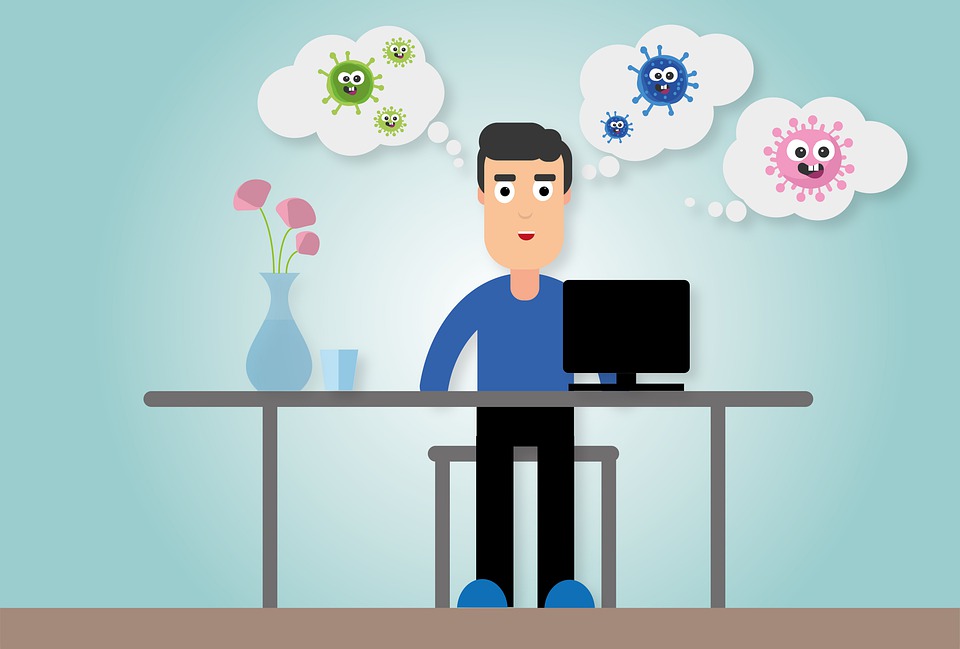SPUR Talk: the Future of the Office
4:07 PM PDT on August 6, 2020

Image via Pixabay
Now might be a good time to open a posh coffee shop with live-edge tables and good wifi in Sebastopol or downtown Livermore, according to a SPUR talk this afternoon about the future of office work and commuting in the post-Pandemic world. "People are willing to do something once a week they wouldn't be willing to do five days a week," said Jed Kolko, an economist at the research firm Indeed Hiring Lab. "If people can go into the office once or twice a week, they will trade off more commute for more space and we will see residential shifts to more suburban and exurban areas."
That means there will be more demand for lunch places, coffee shops, and other supportive services in outlying towns (and less in the downtowns of major cities). However, office real estate is going to shift the other direction, Kolko figures, because on days that employers want all hands in the office, they're going to have to be in a central location and not satellite offices in the burbs--and that will mean in places such as downtown San Francisco and Midtown Manhattan.
Shifts in real estate demand were just one of many topics discussed by the panel of experts trying to predict what will happen when the nation's workforce that is currently working from home are permitted to return to the office. All of the panelists seem to agree that even if a vaccine is found tomorrow, the default of everyone commuting daily to an office is probably over. "I don’t see us forcing people to work-from-home," said Michele Schneider a Senior Vice President for Salesforce. However, work-from-home "...has been a big experiment for us to go through. Our executives and leadership have been happy and surprised."
So offices aren't going to be shuttered permanently, but their use and purpose is going to shift dramatically, said the experts. The value of collaborative spaces, such as conference rooms, will take priority over individual offices. "Now that you've been home for a while, why do you need to go back to the office?" asked Terry Kwik, a principal with RMW, which designed offices. "It’s always about collaboration, whatever business they’re in."
That collaboration could be as simple as stopping a co-worker by the water cooler and sketching out an idea on a piece of paper. "We're looking at re-arranging pods and furniture to be more conducive to collaborative work. When we’re brainstorming there’s no substitute for being face to face."
Because of the pandemic, workers have lost "...the unplanned, ad-hoc conversations," asked Yasemin Kologlu, design director for SOM in New York City. "That was a big part of office culture. How can one replicate that?"
The pandemic has also forced architects to reconsider the value of space, especially outdoor space, ventilation, and even bathrooms in office buildings. "There will be more single room bathrooms [in offices], rather than stalls," said Kwik. He also figures there will have to be multiple entrances to common spaces, so people aren't forced to come within six feet of one another as they come and go. And "How do you get people up to the 40th floor?" he added, acknowledging that people may fear getting squished into elevators and will prefer medium, low-rise buildings.
That said, some on the panel worried about the potential downside of so much work-from-home. "Younger people don’t have mentors, don’t have socialization, can’t meet people in their fields," said Mark Hogan of OpenScope Studio. "What will it mean for people just starting out, trying to get a foothold?"
"Lots of our younger folks come in to socialize, they make friends, they go out after work," said Schneider. "It’s part of their social life, but they’re missing out on that as well." Kwik said there's just no way to replicate the social aspect. "We tried to have happy hours on Zoom," he said. "It's really awkward." There were also concerns about maintaining work-life balance when people are literally living in the same space they work.
Of course, if an effective vaccine is found it may be that, in time, firms will simply pull everyone back into the office. But Kolko doesn't think so, now that people are more attuned to working from home and managers aren't as concerned about their ability to see what their employees are doing. "The tools have gotten better," for coordinating and managing people working from home, he said. The panelists seemed to suggest that office culture will simply become more flexible, perhaps with newer employees coming in every day and many older ones coming in once or twice a week, depending on preference. That means there will be fewer people commuting overall on a daily basis--a side benefit of that will be less pollution, said Kologlu (and less overcrowding on transit).
The pandemic has provided "...a moment to stop and push reset on the way we design, work, collaborate," she said, anticipating "...a flexible future that allows us to be the best we can be at our workplace."
For more events like these, visit SPUR’s events page.
Read More:
Stay in touch
Sign up for our free newsletter
More from Streetsblog San Francisco
Weekend Roundup: Bancroft Lane Gets Concrete, Party in Downtown S.F.
...and the Bay Bridge to get its lights back
Richmond-San Rafael Bridge Bike Lane Will Need Support
There's no evidence the bike lane contributes to congestion on the bridge
Update on Oakland DOT’s Lakeshore Protected Bike Lane Project
Public seems fairly positive and accepting towards the coming project. Let's hope it stays that way




